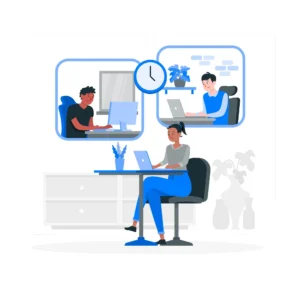Recipes of Success for Your Cloud Kitchen!
Imagine not having to spend extra just to fit in a better location or worrying about parking space and a better ambiance. All you have to focus on is making awesome dishes and quickly delivering them. Cloud kitchens are becoming the top business choice due to low investments, low setup requirements, high productivity, quicker services, competitive prices, low competition, and happier customers. However, you will still receive digital assistance to keep your business going. Even if you run a small cloud kitchen business, you will still need Cloud Kitchen Software to manage operations. This seemingly simple business type can become complex if you choose the wrong digital assistance. For instance, instead of running on different systems, choose ERP for Cloud Kitchen. It is best to segregate all your activities on a single platform. Therefore, make sure you choose a Cloud Kitchen Management Solution which supports ERP and CRM on the same platform. LS Central is the most renowned example of such. It is a unified ERP and CRM that allows flexible tools, and agile features to help you boost productivity and increase profit margin. How Can You Decide on a Cloud Kitchen Business Model? Cloud kitchens bring new categories and innovative menus to the market. No need to establish a full-fledged traditional restaurant, you only have to focus on the quality of food and services you provide. Decide a particular theme/ model like: Healthy Food Since people are now becoming more health conscious, they want to eat healthy meals even when they don’t have time to cook, or they don’t know how to cook. You can put up with healthy recipes on your menu disclosing all the ingredients and calorie counts. There are working professionals who fail to manage healthy food for themselves and are forced to grab unhealthy food. With a healthy food cloud kitchen model, you can ensure you have their back. Regional Cuisines Regional cuisines like Punjabi, south Indian, or Rajasthani cuisines are also popular choices for ghost kitchens. People look for a change now and then, and these cuisines are no less than a breath of fresh air. Focusing on a particular dish like Biriyani can also work well. Indulgent Food We cannot miss indulgent food such as waffles or crepes. These too are a great theme for a cloud kitchen that you can optimize for quicker delivery. Demand for such food is booming these days, as they are quickly digested and make the consumer crave them even more. Meals Meal boxes are excellent for people always on the move and require a variety of food options every day. In these busy times, customers need a full-course meal to stay energetic and productive. You can be as creative as you want to be; design meals based on region, calorie count, or just a fun box with burgers, wontons, noodles, etc. Boost Customer Engagement with Cloud Kitchen Software No matter how good you are with food, if you do not invest in viable Cloud Kitchen Software, you will never be optimally productive. Having ERP for Cloud Kitchen Technology manages and streamlines all your operations and customers. Use CRM for Cloud Kitchen for: Connecting and Understanding Customers on Online Ordering Platforms Since you do not have a physical place where customers can contact you, your website will be the first place where they will visit, check it out, and drop their queries. Make sure you upload enticing pictures or new launches. Also, ensure your Cloud Kitchen Software helps you track customer movements, which dish is attracting them the most, and what are they ordering primarily. With this data, you can innovate menus that match their taste. Embrace Speed, Automation, and Optimization When running a cloud kitchen, automation, speed, and optimization are the key factors that impact your success. Install a Cloud Kitchen POS that runs on the cloud and allows integration with other tools; this will make your life way easier. Another thing you can have been an order management system to bring your orders from different third-party apps to one place. Cloud Kitchen Software like LS Central provides all these features in one place. Get Feedback from Customers Getting feedback from your customers can be a little tricky when you do not have direct contact with one another. It is important to establish an engagement chain via different mediums such as SMS or email. This is where receiving orders from your website plays a major role, you can see their details and provide meaningful communication. Menus, Raw Material, and Cooks Craft an impressive menu based on customer data and feedback. You can replenish raw materials accordingly. Make sure your Cloud Kitchen Software enables automatic replenishment to help you streamline the process. Moreover, stocking-based demand prevents overstocking and understocking, hence cutting waste. Cloud kitchens are flourishing in today’s market where labor shortages and several restrictions are prevalent. Good Cloud Kitchen Software is as important as the quality of food and delivery services. Make sure you get a Cloud Kitchen Software Solution that supports both ERP and CRM. If you are looking for Cloud Kitchen Software Implementation, LS Central is currently the most renowned solution in the market. Being a unified Cloud Kitchen Platform, it manages and stores data in a single database while allowing easy and updated data access. Trident Information Systems is a Microsoft Dynamics 365 Gold Implementation Partner and LS Central Diamond Partner. Allow our robust team of 200+ specialists with unbeatable skills to help you thrive in the market. Leverage our 20+ years of experience and make your customers happier than ever. If you wish to boost your productivity four times more, Contact us.
Recipes of Success for Your Cloud Kitchen! Read More »





